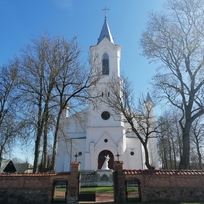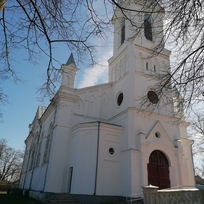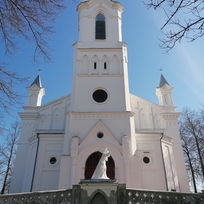Baisogala St. The Trinity Church is one of the most famous architectural masterpieces in the Radviliškis district, standing in the center of the picturesque town of Baisogalas, near the bank of the Kiršina River. This impressive sanctuary, built in 1882, is a beautiful blend of historical architectural styles - Neo-Romanesque, Neo-Gothic and Neo-Renaissance features intertwine in a harmonious combination.
The history of the church dates back to the 16th century, when in 1539 the Polish king Žygimantas Augustas published a document on the establishment of the Baisogala parish and donated 50 Wallachian lands to the church. In the beginning, a simple chapel without a priest stood here. The first wooden cross-plan church was consecrated in 1637, but tragically burned down in 1774. It was temporarily replaced by a temporary shelter until the church was rebuilt and consecrated again in 1781.
In 1795, an altar was established in the church, and at the beginning of the 19th century, several villages, such as Januškonys and Piepalai, belonged to it. The construction of the new brick church, which began in 1877, was granted permission by the Russian Minister of Internal Affairs and financed by Vladas Komaras, the owner of the Baisogalas manor homestead. The amount of 28,653 rubles was allocated for construction - a significant amount of money at that time.
The new church was completed in 1882 and consecrated by Bishop Mečislovas Paliulionis. The sanctuary is a one-tower structure with outbuildings, with elegant turrets at the corners and on the facade. The churchyard is surrounded by a high fence of stone and brick masonry, which provides additional historical and aesthetic value.
Once inside, one can feel the ancient spirit, enhanced by the centuries-old artwork and architectural solutions. Every visit to this church becomes not only a spiritual, but also a cultural experience, allowing a better understanding of the riches of Lithuania's religious and architectural history.









Reviews